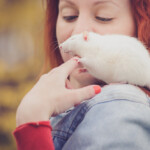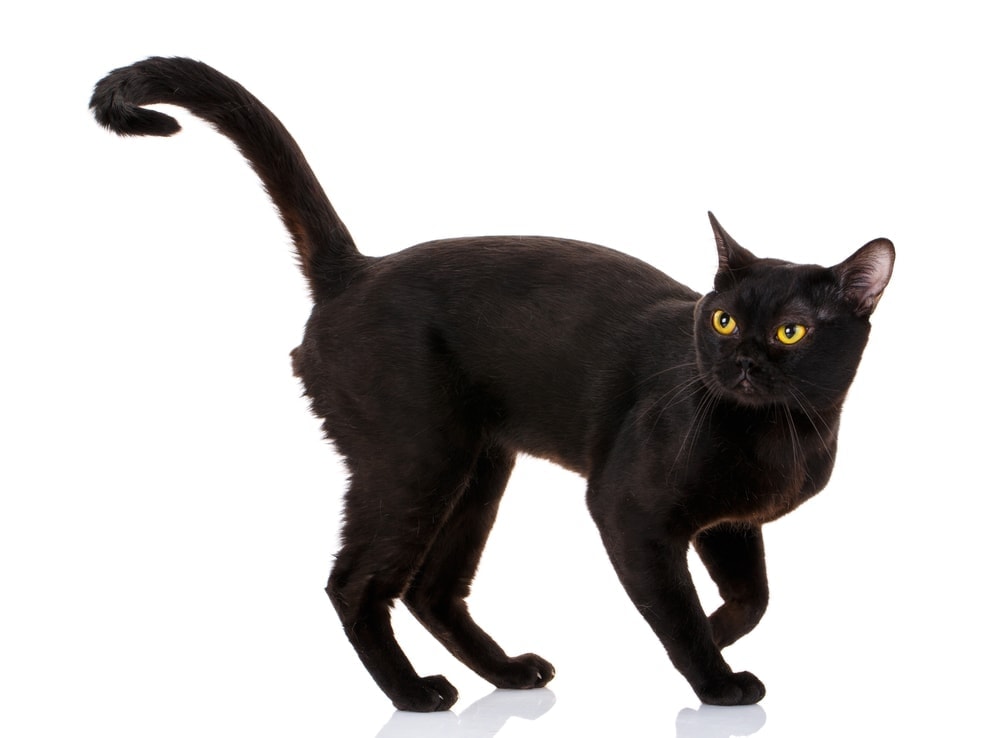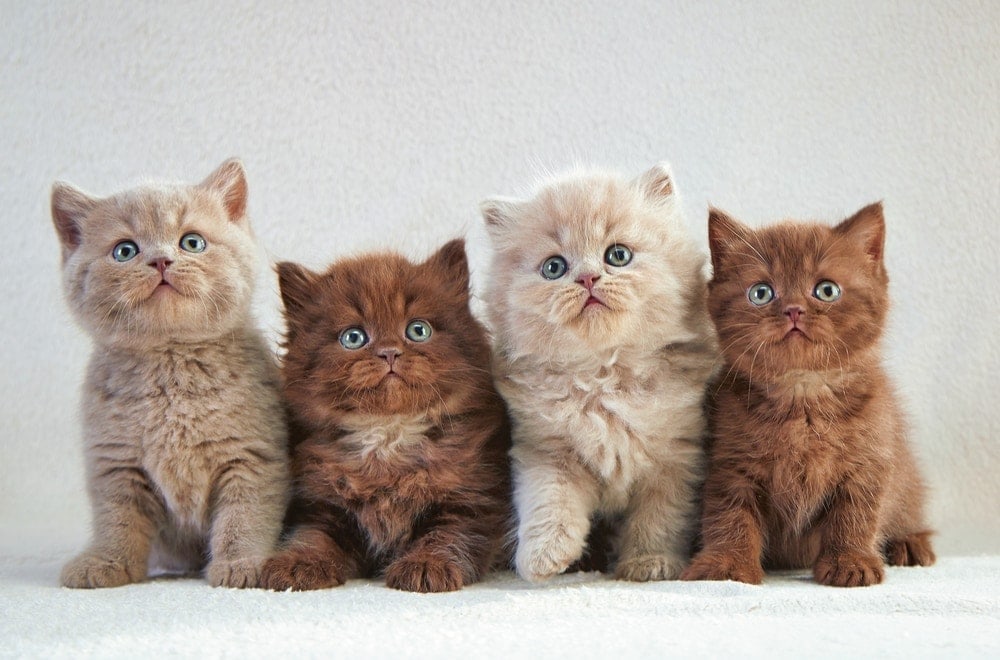The Silver Bengal cat is extremely sought after due to its stunning overall appearance. If you want to get one of these cats, you’ll need to learn all you can about them.
This breed is truly unique in a number of ways, which is why it has become so incredibly popular.
Silver Bengal Cat – Care Guide & Information
1. History of the Silver Bengal Cat
The silver variation became a part of the Bengal cat breed in the late 20th century. This cat was the result of breeding a Bengal and an American Shorthair. Only a few different breeders were responsible for creating the cat we know today as the Silver Bengal.
2. Appearance
Silver Bengal cats can have a wide range of base colors, including rust brown, tan, gold, orange, ivory, and buff. They are known for their dark-colored black or brown spots as well.
A number of these cats have different colored spots, giving them a vibrant and unique look. It’s not altogether uncommon to see them with marbled patterns, which also look quite beautiful.
The striking sheen of the Silver Bengal’s coat is another physical trait that makes it very popular as a pet in places all over the world. These cats almost seem to shimmer and shine, especially in the right lighting.
Another reason why so many people across the planet adore these cats is their piercing blue eyes. The eyes of these cats are absolutely mesmerizing.
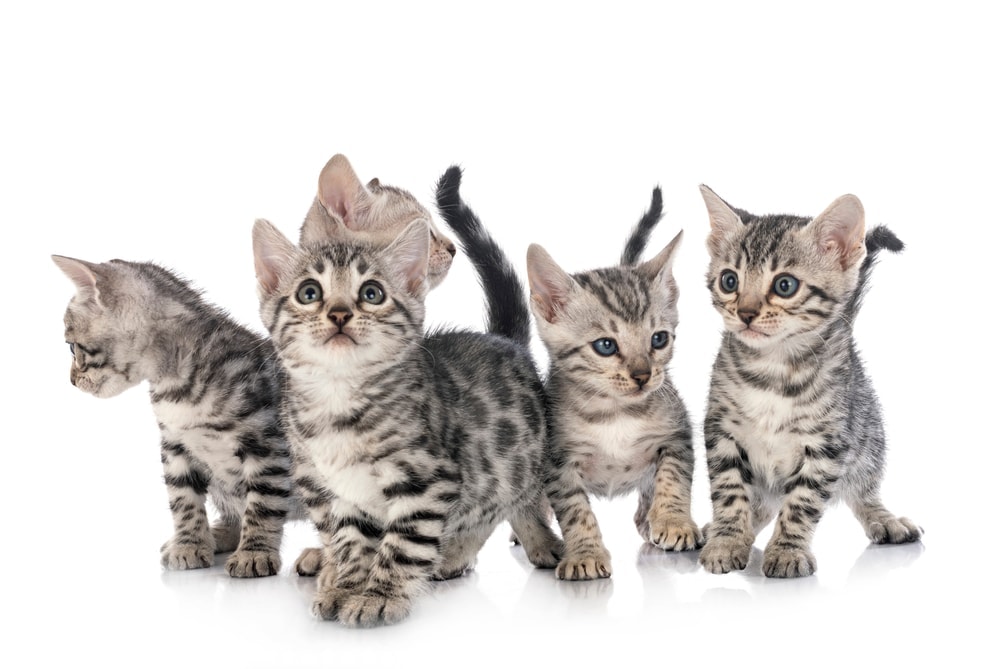
3. Silver Bengal Variations
There are a number of variations of this particular cat breed that you should know about before choosing one of them in particular.
- Blue Silver: These cats have a gorgeous coat that boasts a blue-silver hue, which is due to the mutation of a single gene.
- Silver Charcoal: This pattern features a silver base color with a marbled pattern that includes black charcoal-colored markings all over the cat’s body.
- Silver Snow: Silver snow Bengal cats have a silver-toned coat with white markings.
4. Breeding
If you want to breed Silver Bengal cats, there are a number of things you’ll need to know.
When breeding these cats, you’ll want to keep tarnish to a minimum while selecting a good contract of colors. You also need to breed silver Bengals with other silvers for multiple generations. By doing these things, you will get the best possible results. It is important to remember that breeding them can be tricky and quite challenging overall.
The reason you want to breed silvers with silvers is that doing so will prevent tarnish. The last thing you want is to have cats with tarnished coats, as they will look terrible as a whole.
5. Tarnish
The term “tarnish” refers to small but noticeable traces of warm colors like red or yellow that is present on the cat’s fur. These discolored areas are considered to be tarnish, as they are not an intended part of the feline’s natural coat.
The tarnish that can be seen in some Silver Bengals can be traced back to their Abyssinian ancestors. It is actually quite challenging to remove tarnish with this breed. As we mentioned above, the best way of doing this is to breed silver Bengals with other silvers for numerous generations. This definitely takes some time, but it usually works quite well.
Despite what some people think, breeding charcoal Bengals with the snow variety does not remove tarnish in this breed. The only way to reliable do this is by breeding silvers with silvers, usually for at least three generations.
6. Contrast
When it comes to breeding Silver Bengal cats, contrast is something else to consider. This term refers to base color of the cat versus the other markings. Since this is a dominant trait that cats inherit from their parents, you’ll need to breed two cats that exhibit a high level of contrast.
7. Grooming
One of the great things about owning a Silver Bengal cat is that you won’t have to deal with a ton of shedding. These cats do not require repeated grooming on a regular basis. Even a lot of people who are allergic to cats can own this breed with minimal to no issues.
A certain amount of brushing is a good idea, but you won’t have to worry about bathing or grooming these cats a lot. This breed is considered hypoallergenic due to their short coat and lack of shedding.
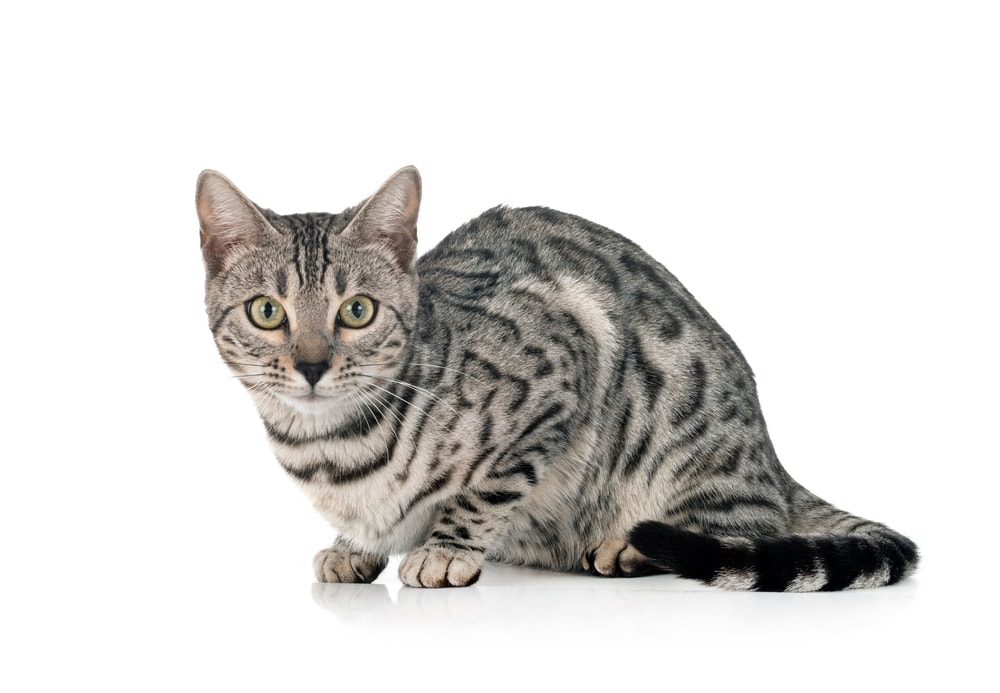
8. Silver Bengal Personality
The Silver Bengal cats are very easygoing and laid back, which is another reason why everyone seems to love them. These cats aren’t shy about showing affection, but they are extremely active and don’t like to sit still for too long. They are remarkable climbers, which you will soon discover after bringing yours home.
This particular cat breed is perfect for those who have small children and/or dogs. You shouldn’t have any problems with your kids and other pets interacting with your kitty.
Keep in mind that these cats are constantly vying for their owner’s attention. They can also get into a fair amount of trouble when left to their own devices. It is therefore important that you “cat proof” your home thoroughly before bringing one of these felines into your house.
Conclusion
- The Silver Bengal cat became a part of this breed in the late 20th century.
- The base colors of these cats include rust-brown, tan, gold, orange, ivory, and buff.
- Only a few breeders were responsible for initially creating this particular variation of the Bengal cat.
- The main variations of this cat include the Blue Silver, Silver Snow, and Silver Charcoal.
- These cats can have a marbled pattern, spotted pattern, or a combination of the two.
- When breeding these cats, you will need to select a good contrast for a really sharp and vibrant overall appearance.
- The best way to minimize tarnish with these cats is to breed silvers with other silvers for multiple generations.
- Silver Bengals do not require a lot of grooming, as they are short-haired and do not shed very much.
- This is a perfect cat choice for those who are allergic to felines.
- The friendly personality of these cats makes them perfect for families and dog owners.

